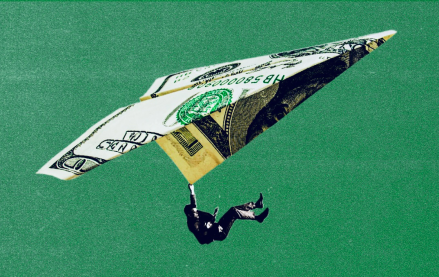Save 50% on a 3-month Digiday+ membership. Ends Dec 5.

A digital publisher is using Google’s new technology to ensure ads are 100 percent viewable, attempting to eliminate one of the big obstacles in the way of brands shifting more money online.
The publisher IDG Communications, which is behind sites including PCWorld and MacWorld, can serve the guaranteed impressions using a new capability in Google’s DoubleClick product called vCPMs — the “v” stands for viewable and CPM is the cost per thousand ad impressions.
Google introduced the DoubleClick feature at the end of September, and IDG was among the partners of the limited launch.
“Right now, there are three big topics: viewability, fraud and ad blocking,” said Peter Longo, CEO of U.S. media at IDG Communications. “Publishers are dealing with all of them.”
Google’s viewability guarantee works like this: It forecasts when an impression is absolutely viewable, meaning it’s not sitting at the top of a page when a user has scrolled to the bottom or it’s not playing on one tab when a user is in another. Google’s technology automates the process of delivering full viewability to advertisers that are willing to pay a premium for the guarantee.
The ads come with a 30 percent higher price, Longo said.
Industry standards say that ads are considered viewed if 50 percent of the pixels are on screen for at least a second, and at least two seconds for video ads.
The definitions of viewable can vary by platform, though, and it is a point of contention among brands looking for the most generous definitions.
Four of IDG’s advertisers are currently buying only 100 percent viewable impressions, and Longo said he expects more.
Google would not say what other publishers are offering the guarantee option. However, Laurent Cordier, director of partner business solutions there, said that the search giant has been investing in viewability technology for some time, and that eventually all impressions could move to the 100 percent viewable standard.
“We’re convinced viewable impressions will become the currency rather than impressions on which advertisers, brands and publishers transact,” Cordier said.
There are still challenges, he acknowledged. The industry has varied measurements and standards, and publishers’ websites are not all optimized for implementing the technology, Cordier said.
Advertisers are pressuring the major digital ad sellers to offer these solutions because of concerns that a large portion of spending goes to low-quality Internet traffic. Google has even issued reports that show more than half of Internet ads may not be seen.
Google’s main rival in display and video advertising, Facebook, also recently launched a viewable guarantee with third-party verification from measurement company Moat.
Still, not all advertisers, actually want these viewable impressions, according to Simon Hayhurst, senior vp of products and development at Rocket Fuel, which also offers these vCPMs. Hayhurst said that the most viewable impressions tend to be the ones at the top of a webpage, but those aren’t necessarily the most valuable impressions.
“VCPMs might not drive the highest return on ad spend,” Hayhurst said.
As for publishers, embracing viewability could lead to a better user experience on the websites, Cordier said.
AppNexus, another ad tech platform, conducted a study this year that found 92 percent of publishers believed an increased emphasis on viewability would benefit business.
“Viewable buying is both an imperative and the logical future of digital advertising,” said Josh Zeitz, vp of corporate communications at AppNexus. “It benefits all market participants.”
More in Media

Marketers move to bring transparency to creator and influencer fees
What was once a direct handoff now threads through a growing constellation of agencies, platforms, networks, ad tech vendors and assorted brokers, each taking something before the creator gets paid.

Inside The Atlantic’s AI bot blocking strategy
The Atlantic’s CEO explains how it evaluates AI crawlers to block those that bring no traffic or subscribers, and to provide deal leverage.

Media Briefing: Tough market, but Q4 lifts publishers’ hopes for 2026
Publishers report stronger-than-expected Q4 ad spending, with many seeing year-over-year gains.





